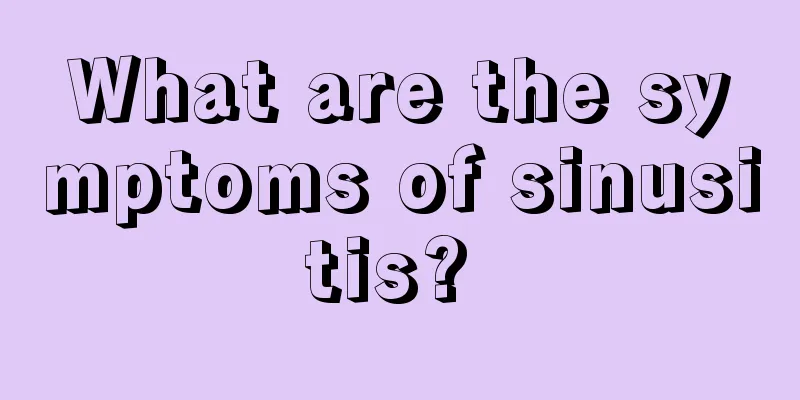What are the symptoms of sinusitis?

|
Sinusitis troubles many people, so we need to pay attention to its symptoms. The most common symptoms are nasal congestion, thick runny nose, local pain, and headache symptoms, so once these symptoms are found, we must pay attention to them. 1. Nasal obstruction: Due to congestion and swelling of the nasal mucosa and accumulation of secretions, persistent nasal obstruction may occur on the affected side. 2. Purulent mucus: There is a lot of mucus or purulent secretions in the affected side of the nose. There may be a little blood in the mucus at the beginning. The purulent mucus of patients with odontogenic maxillary sinusitis has a foul odor. 3. Local pain and headache. In addition to nasal pain caused by inflammation, acute sinusitis is often accompanied by severe headache. This is caused by swelling of the sinus mucosa and compression of secretions or negative pressure after the secretions are emptied, which stimulates the trigeminal nerve endings. Acute sinusitis pain has its regularity in time and location. The anterior group of sinuses are close to the surface of the head, and the headaches they cause are mostly in the forehead, inner canthus and cheeks. The posterior group of sinuses are deep in the head, and the headaches they cause are mostly in the top of the head and occipital area. Acute maxillary sinusitis: often forehead, cheek or upper teeth grinding pain, mild in the morning, severe in the afternoon. Acute frontal sinusitis causes severe forehead pain in the morning, which gradually worsens, eases in the afternoon, and disappears completely by the evening. The headache caused by ethmoid sinusitis is usually mild and limited to the inner canthus or root of the nose, but may also radiate to the top of the head. Sphenoid sinusitis presents with pain deep in the eyeball that may radiate to the top of the head, and may also cause occipital headaches that are mild in the morning and severe in the afternoon. However, some people's pain symptoms are atypical, and it is impossible to determine the affected sinuses based solely on the characteristics of the headache. 4. Decreased sense of smell. |
<<: What is the best way to treat lumbar myofasciitis?
>>: How to effectively treat myofasciitis?
Recommend
Self-diagnosis method of esophageal cancer
Esophageal cancer is not a new word in clinical p...
What causes purple and chapped lips?
It is abnormal if a person's lips turn purple...
The correct way to remove dead skin from the soles of your feet
It looks ugly when some dead skin grows on the so...
Can I drink milk if I have a mole removed? What are the precautions?
Maybe many of us will have some moles on our face...
Is hoarseness definitely a symptom of lung cancer?
Lung cancer is a tumor that people are familiar w...
What's wrong with my weak fist
Weak fists may be due to tendonitis caused by inf...
What to do with oral mucosa after radiotherapy for nasopharyngeal carcinoma
What should I do if my oral mucosa becomes polype...
Delicious food therapy achieves colon cancer health
Colon cancer patients who are recuperating at hom...
Can I take a bath with yogurt?
Now more and more women are beginning to pay atte...
Gallbladder cancer has different manifestations at different stages of infiltration
Gallbladder cancer has different manifestations a...
What are the symptoms of Qi deficiency cough?
Coughing is very common in daily life, and many p...
Low protein edema
If the body shows low protein during examination,...
How to treat cervical calcification, treat according to the cause
There are many reasons for cervical calcification...
What's the matter with the red spot under the eye
Sometimes when you look in the mirror, you find a...
What happens if you drink spoiled honey
Honey is one of the most popular products sold on...









